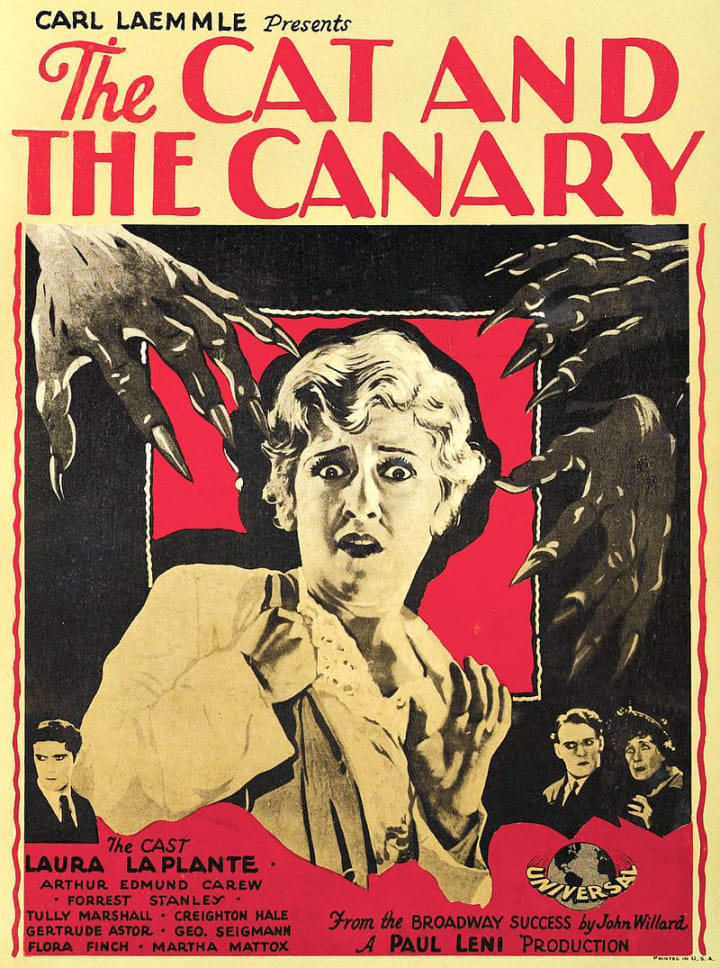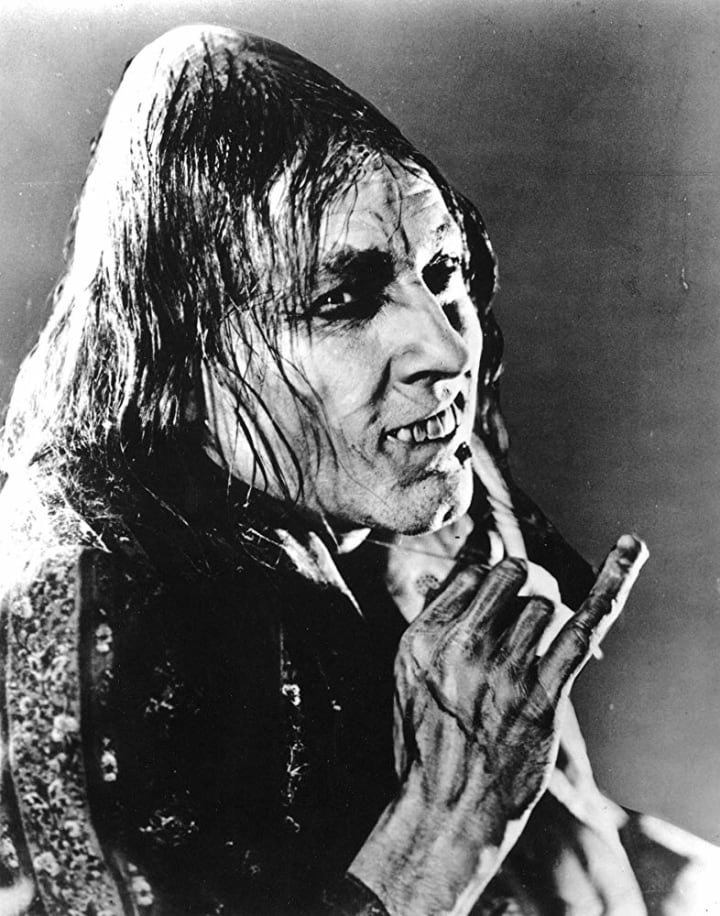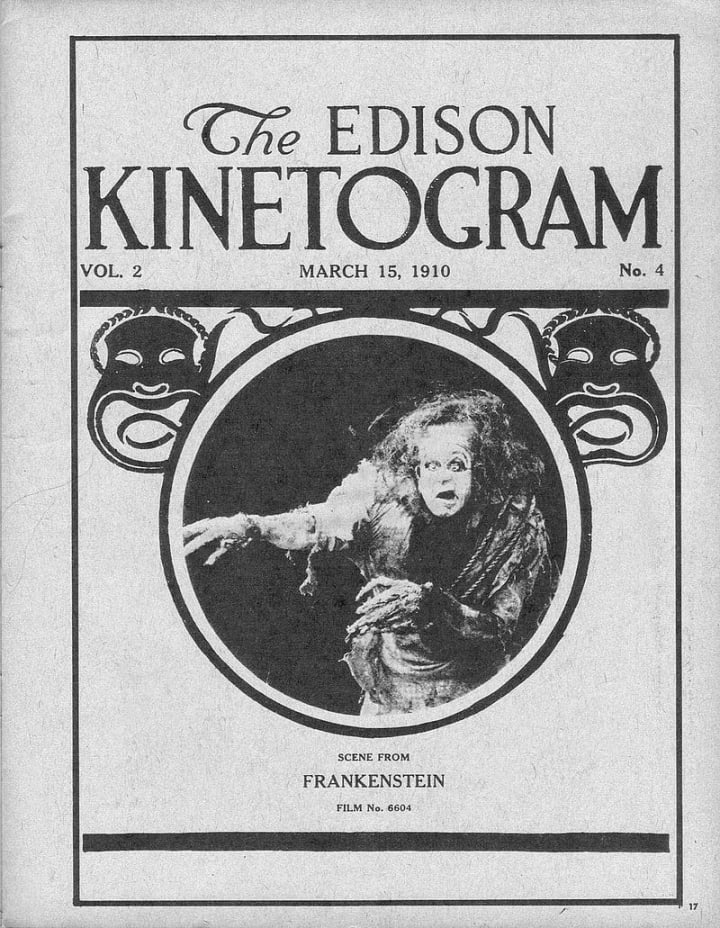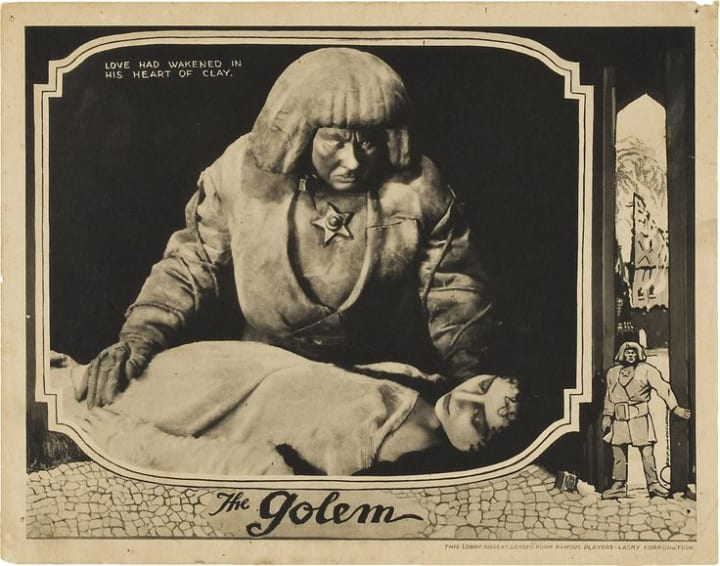
The silent screen gave to us some of the most memorable, iconic images in motion picture history: The Little Tramp, the Robot Maria from Lang's Metropolis (1927), Buster Keaton driving a locomotive across a collapsing bridge; and, of course, who could forget the still-incendiary Birth of a Nation, directed by celluloid pioneer D.W. Griffith?
The silent screen also gave to us some indelible images of horror. There is, for instance, more morbid disgust packed into the badly mutilated existing cut of Erich von Stroheim's Greed (1924) than in a hundred and fifty Friday the Thirteenth knock-offs.
Of course, Greed isn't properly a horror film. The following films, by and large, ARE cinematic nightmares; or, at the very least, intended to be. They are, in order of sheer greatness, as follows:
'The Man Who Laughs' (1928)

Conrad Veidt proves horror is no laughing matter in The Man Who Laughs (1928)
The Man Who Laughs (1928) is based on Victor Hugo's doorstop of a forgotten classic. Giving us the story of Gwynplaine, a young boy banished to an icy death after being abandoned by Comprachicos, or men who mutilated orphan children to turn them into carnival exhibits. (Frederick Drimmer, in his book, Very Special People, gives examples of children raised in clay pots, so that their bodies took on a bizarre shape.)
Growing up, the pale, eerie Gwynplaine finds the love of a blind girl while traveling as, what else? A carnival exhibit. But, will pain and anguish follow him all the days of his bitter, tragic life? Do you even have to ask?
As bizarre as anything David Lynch might have thought of in a fever-dream, Cabinet of Dr. Caligari (1920) has treated audiences through the ages to a haunting series of Expressionistic horror images: painted shadows, bizarre, non-Euclidian angles, buried subtext and strange, lurking symbolism.
Starring Werner Krauss as the "Doctor," and Conrad Veidt as "Cesare," a lean, zombie-like killer with a distinctly proto-goth appearance, the film unfolds like a lunatic's dream of persecution and revenge. Which, we discover (from the depths of a madhouse) that that is exactly what it is. Or, is it? The weird, ambiguous, cryptic ending is designed to wring from us unappetizing ruminations.
'The Lodger' (1927)

Jack's back. Or, rather, this film was made uncomfortably close to when Jack the Ripper was still stalking London streets looking for party girls. A scene from Hitchcock's silent horror thriller The Lodger (1927)
The novel The Lodger, by Belloc Lowndes, took its inspiration from the urban legend about a mad man living in a lodging house, quoting the Bible obsessively, before disappearing into the night. Where he goes, in the fog-shrouded darkness, women mysteriously seem to end up... dead. Possibly, this story grew in the wake of the Jack the Ripper killings of 1888.
Alfred Hitchcock, that arch-master of suspense, delivered a film adaptation with the early earmarks of the stylistic touches he became famous for, capturing the audience in the pea-soup thickness of a London fog, as the "Avenger" (Ivor Norvello) stalks the night, looking to clean the streets of prostitutes. Unsettling viewing that you wont soon forget.
'The Cat and the Canary' (1927)

A forgotten classic of the "Old Dark House" genre, The Cat and the Canary (1927) kept audiences of the day shrieking and giggling with its deft blend of horror and comedy.
Paul Leni's The Cat and the Canary (1927), which was based on a stage play of 1922, was an early classic of the "Old Dark House" genre of horror films so popular in the early decades of the Twentieth century. A young woman (Laura La Plante) inherits a spooky mansion, goes to stay the night, and is shadowed by a menacing ghost while an escaped lunatic (with tremendous, tusk-like teeth) does what escaped lunatics are won't to do.
Leni directs with horrible aplomb, delivering up a Hell's breakfast roster of eccentrics, weirdos, grotesques (with and without tusks) and other assorted lurkers and menacing ones hiding in the shadows. Oh, and hairy hands coming out of secret passages. Cliché, yes. But, it WAS 1927, after all.
'Dr. Jekyll and Mr. Hyde' (1920)

A particularly repulsive, seemingly snot-dripping John Barrymore made the world a little more wretched with his sickening turn as a coconut-headed "Mr. Hyde" (1920).
This adaptation of Stevenson's short, classic meditation on the dualistic nature of good and evil, is given a strange, sickening resonance by the performance of screen legend John Barrymore, who delivers a repugnant, slime-drenched Hyde that seems to be oozing filth, grease and even less savory substances from every pore of his coconut-headed body. (His scalp seems to be shaped, oddly, like that of some species of Sasquatch.)
The transformation scene, which has all the requisite gesticulations, throat-grabbing, jerking, spasmodic contortions and weird dissolves, was the predecessor of... all that I just mentioned, in dozens, if not hundreds of future films.
An additional face to look for here is that of actress Dale Fuller, who portrayed the tragic "Maria Miranda Macapa" in Erich von Stroheim's silent celluloid masterpiece Greed (1924).
'Edison's Frankenstein' (1910)

The repellent and grotesque Charles Ogle terrified audiences before World War 1 in Edison's short adaptation of Frankenstein (1910)
Wowing audiences of the Edwardian Era, Edison's grotesque, static, stage play-like Frankenstein (1910) was long thought to have shared the same fate as so much of our silent film history: lost to the ravages of time and the thoughtlessness of producers who saw no value in preserving what was thought, at the time, to be a disposable art form; "prole feed" for the working classes.
It was then rediscovered, couched away in some dusty attic, and the comic, hideous-grotesque visage of Charles Ogle (looking like the ward of a medieval madhouse) flickered back to life once again after almost a century. A high point of the film is the creation of the "Monster" in a bubbling cauldron; the pieces of hairy flesh seem to float onto the skeletal bones, in a reverse-motion shot with an anatomical skeleton obviously manipulated by wires. Be that as it may, it must have sent those women from back before World War 1 screaming through the aisles.
'Witchcraft Through the Ages' (1922)

Human sacrifice and Black Mass revels are just a few of the highly strange delights available in Benjamin Christensen's family film, Witchcraft Through the Ages (1922).
This hideous little Swedish-Danish obscurity makes ALL the old medieval nightmares into realities: black mass revels, human sacrifice, demonic butt-kissing; and a few stake burnings to boot. Director Christensen's study of the Malleus Maleficarum (or, Hammer of the Witches, an Inquisitorial text about finding 'em, torturing 'em, and barbecuing 'em before they poison the cows and pee in the wells) inspired the "documentary" that unfolds here. Replete with ghoulish demon masks and goat-worshiping Satanic dances (as well as some errant Luciferian snake-tongue), this film will stick in your craw like a communion wafer made of turnip.
Of course, there's a version with some jazz music and a few bars of narration from the infernally nasal William S. Burroughs.
'Der Golem' (1920)

The hulking clay avenger Paul Wegener, protecting the life of a young woman in Der Golem (1920)
Actor Paul Wegener, who also did a turn in the early horror film The Student of Prague (1914), (based on the Faust legend, Student was a film I wanted to see for many decades after reading about it in a monster movie book at my childhood library. The magic of the internet and YouTube finally made that a reality) and also made a horror film called Alraune with Metropolis' Brigitte Helm. He made Der Golem twice, five years apart. The first version has been lost, unfortunately. The 1920 version survives.
The film, based on the Jewish legend of the clay giant that protects the people of the ghetto, delivers fantasy and magic, thrills and a hulking, clay behemoth that audiences will not soon forget. A kindly, misunderstood beauty of a brute, the predecessor to Karloff's Frankenstein (1931), which would come over a decade later.
'The Phantom of the Opera' (1925)

Erik (Lon Chaney Sr.) in an iconic pose as the murderous and tragic Phantom of the Opera (1925)
There is no way one could compile a "top ten" of silent horror without including Lon Chaney Sr. The immortal "Man of a Thousand Faces" portrayed clowns and grotesques, wildly politically-incorrect (for our era) stereotypes, and the hurting, the outcasts; his world was steeped in pathos. He was, truly, a legend of the "feeling and thinking" screen.
In Phantom, he gives a performance so breathtaking, so haunting and so... perfect, that it has come down to us now as a veritable part of our collective psyche. There is no one that could sit through Christine's unmasking of Erik as he sits at the keyboard, no one who could look at that shocked, outraged and murderous gesticulation of bloodthirsty shock, and NOT feel it fuel the gas tank of morbid, unsettling dreams.
A true visual and mental feast, the gothic, fantastic climax of this classic is well worth it. It writes flickering fantasies of another world.
'Nosferatu' (1922)

Graff Orlok (Max Shreck) feeds at the neck of actress Greta Schroeder in F.W. Murnau's seminal vampire film Nosferatu (1922).
Nosferatu (1922), F.W. Murnaus' seminal vampire epic, a film so replete with legend and illusion, speculation and occult innuendo, it has actually inspired a biographic film, Shadow of the Vampire (1996) to explore its themes as "reality," is our final entry here; and, needless to say, the greatest of the great. Banned because Dracula-author Bram Stoker's widow pressed a lawsuit on "copyright grounds," the film was long thought to have been lost. It wasn't, and what has come down to us is "the most realistic vampire film of ALL time," to quote someone whose name I can't quite remember right now.
Max Shreck presents us with a startlingly rodent-like grotesque in the form of "Graff Orlok," a character fulfilling the Dracula role. Lean, menacing, ugly, with a huge nose and rat-like front teeth, a bald pate and tremendously long fingernail-claws, he, along with legions of actual rats drives home the idea that vampirism can be indistinguishable from the plague, and blurs the line between science and superstition, medicine and black magic; the vampire-like nature of disease, and that of the dead. Nosferatu is a short, icy trip to the heart of old-word European superstition about the living becoming "food for the dead," to quote one old songster. (Or, we suppose, in this case, food for the UNDEAD.)
The film writhes with rat-like majesty. Literal rats, thousands of them, pour from the hold of a ship, and it is made clear to the viewer that vampires are simply another plague-carrying vermin. Before this, we are treated to a scene of a stiff-as-a-board Orlok rising, without bending, from his earth-laden box. So absurd, so comic-grotesque, this scene has become a classic image over the decades.
Orlok, in the final scene, battens on the flesh of Lucy (Greta Schroeder), drinking her blood. Occupied till sunrise, he finally disappears in a puff of smoke, gripping his dead heart in agony.
In a final note: Director F.W. Murnau's head, or we suppose SKULL, more accurately, was recently stolen from his tomb in what German police officials described as an "occult ritual." Undead?
Conclusion: This was a hard list to compile necessitating the exclusion of films such as The Bat,Genuine, the profoundly bizarre Warning Shadows, From Morning to Midnight, Waxworks, The Hands of Orlac, Eerie Tales, The Student of Prague, Faust, The Phantom Carriage...
On the whole, though, we feel this list includes the essentials that MUST be viewed, if one is to consider oneself an AUTHORITY on silent horrors. Until next time, boys and ghouls, remember: In silent cinema, no one can hear you scream, because, well, no one can hear you. Period.






Comments (1)
Some great images and films here. I know Nosferatu, Caligari and The Phantom and will chack out the others too